I Drove an 80-Year-Old Car on a 1,000-Mile Road Trip and Lived to Tell the Tale

I remember what Mother Cole said after hearing my plan to take my 1936 Ford on a 1,000-mile road trip.
“You’re crazy,” she hollered in exaggerated disbelief. Her response was not inappropriate given my track record of questionable decisions, but still, what’s the worst that could go wrong?
Well, that’s a fate-tempting question to ask if there ever was one. For starters, a minor fender-bender could be deadly — I’d be relying on the tepid stopping power of mechanically operated drum brakes all while putting my faith in a quartet of ancient bias-ply tires that could be as much as a decade and a half past their best before date.
And if these perils weren’t enough, I’d have to survive without air conditioning, a radio or reclining seat, and with headlights that are dimmer than a smartphone’s camera flash. Piling it on, I would also have a limited stable of just 100 horsepower to keep up with modern traffic. Clearly, taking an 80-year-old car on a 1,000-mile road trip is an incalculably terrible idea.
The Call of the Road
But damn the odds! I’m no gambler, but this is a chance I couldn’t pass up. Several months ago, I made the decision to pilot my 1936 Ford V8 sedan from Detroit all the way to Road America, a premier racing venue located about two hours north of Milwaukee in the heart of pastoral Wisconsin farm country. The MacGuffin for this stunt was the Midwest Automotive Media Association’s (MAMA for short, because everyone loves a good acronym) annual spring rally, one of the best press events in the world and something I make an effort to attend at every opportunity.
Driving a car from this era is akin to staring down the barrel of a loaded gun with a sadist fondling the trigger. You simply have to accept that any mishap, no matter how minor, might be fatal, which, on the bright side is better than living with a devastating disability should you limp away from an accident. If the guy coming at you in the opposing lane decides to check Snapchat at the wrong time and crosses the centerline, you’ll be gone before you even have a chance to scream.
Really, the only safety feature this Henry-era Ford has is safety glass, which I macabrely joke is there so you can have an open casket at your funeral because your face won’t be sliced into bacon strips by a hailstorm of shards. It’s best to say your prayers and don’t be stupid. Passengers don’t find this very funny.
Rust and Bolts
I bought this ancient vehicle in late 2009. During the first four-ish years of ownership, my dad and I performed a complete frame-off restoration on what turned out to be a very tired and exceedingly rusty relic from Dearborn’s glory days. Every nut, bolt, bracket and assembly was taken apart, cleaned, repaired, reconditioned or replaced as required, all to bring this machine back to drivable condition. Really, it’s as close to an eight-decade-old new car as you’re ever going to get.
SEE ALSO: 2016 Monterey Car Week Coverage
My focus with this restoration was on building a period-correct driver, not a perfect, 1,000-point Concours trailer queen. While it features the original frame, engine, transmission, driveline and other major components, I added things like a 12-volt electrical system, turn signals and LED tail lights for greater safety.
But still, why risk my immaculate baby on such a long and hazardous journey? Why endure the stress of living through a perpetual near-death experience just to attend an event my employer would have happily flown me to or that I could have reached in practically any brand-new vehicle of my choosing? In short, it’s because I love driving this vestige from the Great Depression.
Sure, its fully mechanical steering is, at best, an approximation, the engine’s full fury means dawdling Honda Fits beat you from a stoplight, and the abovementioned brakes bring things to a stop in geological time. Dynamically, this car has more in common with agricultural equipment than a modern sedan, but crudity is all part of the charm.
Flat’s Where it’s At
Through sheer force of will, in 1932, Henry Ford pushed manufacturing technology beyond its limit to introduce the world’s first mass-produced V8 engine, the famous flathead, so nicknamed because most of its major moving components are nestled inside the revolutionary single-piece block, resulting in cylinder heads that are – and here’s a shocker – completely flat.
Smooth, torquey, and surprisingly speedy for its time, this powerplant was a Ford mainstay for two decades, hauling all manner of vehicles around until it was finally replaced by the ill-conceived Y-Block in 1953. Curiously, the design lived on in other countries for much longer, even propelling French military trucks into the 1990s.
Sparing you a protracted history lesson, it was the sort of groundbreaking engine that only comes around once a generation. It gave Bonnie and Clyde the ability to evade Johnny Law and even spawned the hot-rod revolution in post-war America. For 1936, it was rated at a stout 85 horsepower, though the example propelling my car has been bored out rather significantly for a total of 251 cubic inches (roughly 4.1-liters) and what I estimate to be 100 ponies.
Silky smooth, these low-compression engines are real sweethearts with a lot of torque and a sound unlike any other V8. They produce a most beguiling exhaust note, sort of a shuffling, syncopated thrum.
The Chicago Problem
My planned multi-state journey began well before sunrise, kicking off in Detroit’s northern suburbs where I picked up one of two passengers that wanted to tag along for the ride.
Meandering our way across southern Michigan, we avoided highways as best we could, which gave us an opportunity to enjoy the bucolic countryside surrounding us. At one point, we even stopped for 20 minutes at a total stranger’s home because we saw he had several classic cars parked on the lawn. After a tour of our impromptu host’s vehicle collection, we got to the task at hand once more.
Besides, the highway’s siren call was one I couldn’t resist. Ditto for the contented purr of a side-valve V8 goading me to crack the throttle plates a little wider with each mile of pavement passing beneath my feet.
SEE ALSO: Old Trucks Never Die…
By the time we reached Indiana, it was time to ride the freeway, both for an easier journey and to make sure we arrived at our destination at a reasonable hour. The Hoosier State passed with minimal fanfare, though the truck traffic on I-94 is absolutely insane. If something bad was going to happen, it would have been in this maelstrom…
Or it could happen in Chicago, famous for its abominable congestion. We timed our trip through Illinois to avoid morning and afternoon rush hours. Still, we encountered plenty of stop and go traffic, which dogged us for five or 10 miles, something that forced me to monitor the temperature gauge like an ER physician watching a patient’s vital signs. Old cars tend to overheat easily in stop and go conditions, especially the flathead V8, which is notorious for boiling over. Still, aside from slow-going traffic in a few areas, Chicago wasn’t much trouble and neither was the car, much to my relief.
Despite what you might think, this old Ford doesn’t seem to mind highway travel. Despite being built to traverse dirt two-tracks, it’ll cruise all day at 65, 70 or 75 miles an hour, though it’s happiest at about 60 mph turning some 3,000 rpm. An optional overdrive would have gone a long way to calming things down.
Victory!
After careening through the Windy City’s congestion, it was pretty much smooth sailing, aside from some rain showers that slowed our progress in southern Wisconsin, that and the stench of cow manure permeating our respiratory systems.
Passing through these inclement conditions, we finally arrived at the hotel some 14 hours after I pulled out of my garage. Amazingly, my 80-year-old car went the distance, all without any mechanical faults or other issues. The only trouble we encountered was a mostly useless windshield wiper that flopped around at certain speeds (thank God for Rain-X). The spare carburetor, coil, distributor and condenser I brought in the trunk were, thankfully, unnecessary.
Luckily for us, this old Ford proved just as reliable on the return journey home, never missing a beat.
The Aftermath
All told, the car burned just shy of 68 gallons of gasoline while carrying us an indicated 959 miles. That works out to about 14 mpg, which is hardly great, but what can you expect from a vehicle with just three forward speeds and the aerodynamics of Stonehenge? I have no doubt the car would average 20 with overdrive and slightly slower driving.
Aside from the fuel burn, I had to add about a quart and a half of oil over the course of this journey, an excellent consumption rate for a vehicle of this vintage. Much lubricant is lost through the breather system, which just vents crankcase fumes to atmosphere instead of re-burning them like in modern, ozone-layer-friendly vehicles.
Aside from the windshield wiper, I did eventually have to replace the front wheel bearings and races as the rollers were pitted and discolored from excess heat. Fortunately, this was not a fault of the car, rather its driver. I had them adjusted too tightly, a stupid mistake.
Naturally, Mother Cole was delighted to see that I survived this journey because, just as she had warned, it was indeed a crazy trip. One-thousand miles is a really long way to go in a car this old. But the experience was also enjoyable, invigorating and unforgettable. I’m debating whether I’ll be mentally unstable enough to attempt the same drive next year…
Discuss this story on our Ford Forum

Born and raised in metro Detroit, Craig was steeped in mechanics from childhood. He feels as much at home with a wrench or welding gun in his hand as he does behind the wheel or in front of a camera. Putting his Bachelor's Degree in Journalism to good use, he's always pumping out videos, reviews, and features for AutoGuide.com. When the workday is over, he can be found out driving his fully restored 1936 Ford V8 sedan. Craig has covered the automotive industry full time for more than 10 years and is a member of the Automotive Press Association (APA) and Midwest Automotive Media Association (MAMA).
More by Craig Cole





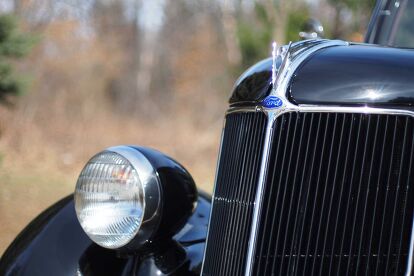



















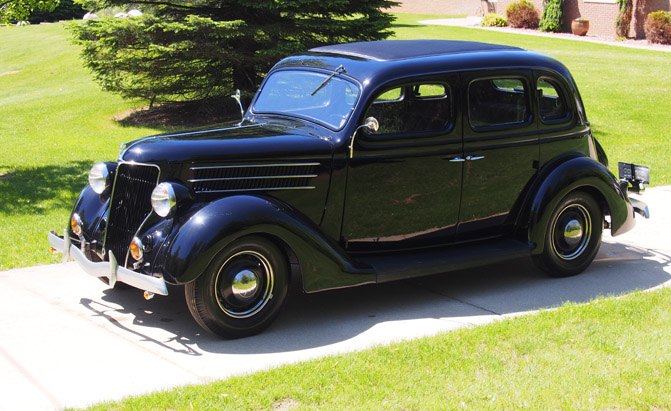






















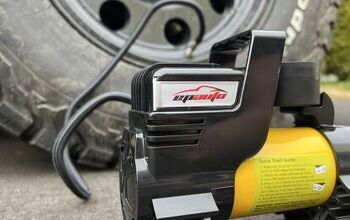



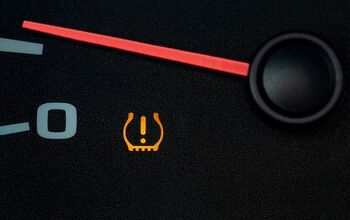





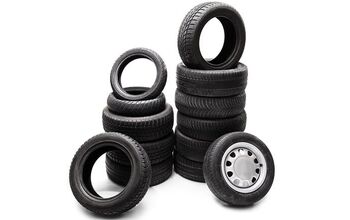

Comments
Join the conversation
thoroughly impressed =)
NICE job! With the car, and the story!